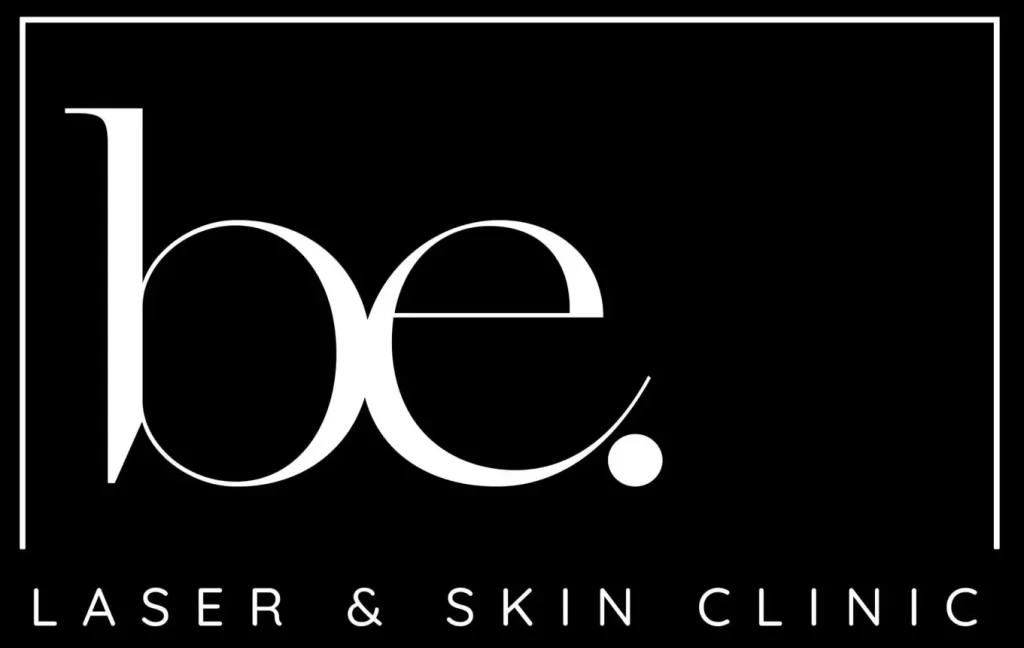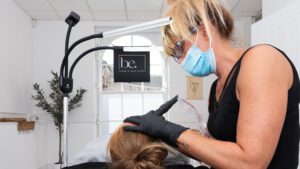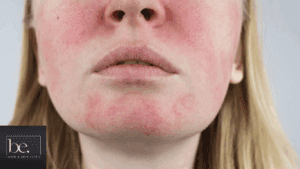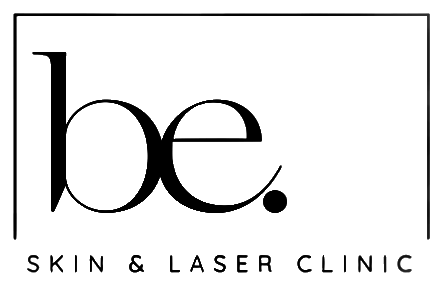Alright, so you’re thinking about getting some laser work done, or maybe you’re even looking to become a laser safety guru yourself. Before you book anything, it’s super important to get clued up on laser safety certifications. It’s not just about flashy lights; it’s about keeping everyone safe. We’ll walk you through what you need to look out for, from understanding different certifications to knowing when a Laser Safety Officer is a must-have. Let’s make sure you’re properly prepared and know what’s what with laser safety certifications.
Key Takeaways
- Always check if training is actually certified, not just some random course. It makes a big difference.
- A Laser Safety Officer (LSO) isn’t just a fancy title; they’re the main person for making sure laser gear is used safely and rules are followed.
- Lasers are put into different classes based on how risky they are. Knowing these classes helps you understand the dangers and what safety steps are needed.
- Becoming an LSO usually means you need certain qualifications and some work experience. Plus, you’ll need to keep learning to stay on top of things.
- Sometimes, having an LSO isn’t just a good idea, it’s the law, especially for medical laser uses or high-power lasers.
Understanding Laser Safety Certifications
The Importance of Certified Training
Look, when it comes to lasers, you can’t just wing it. Certified training is there for a reason. It’s not just some box-ticking exercise; it’s about making sure you and everyone around you doesn’t end up with a nasty laser burn, or worse. Proper training gives you the knowledge to handle lasers safely. Think of it like this: would you let someone fly a plane without training? Didn’t think so. Lasers might not be planes, but they can still cause serious damage if not handled correctly.
Recognising Valid Laser Safety Qualifications
So, you’re looking at a laser safety course, but how do you know it’s legit? There are a few things to keep an eye out for. First, check if the course is accredited by a recognised body. This means someone has looked at the course content and said, "Yep, that’s up to scratch." Also, see what the course covers. Does it go into detail about laser hazard awareness training, different laser classes, and safety protocols? If it’s all a bit vague, it might not be worth your time. Finally, read reviews! See what other people thought of the course.
Distinguishing Between Training and Certification
Right, this is where things can get a bit confusing. Training and certification aren’t quite the same thing. Training is what you do – you attend a course, learn about laser safety, and maybe even get to play with some lasers (safely, of course!). Certification is what you get – a piece of paper that says you’ve met certain standards.
Think of it like this:
- Training: Attending a laser safety course.
- Certification: Passing an exam and receiving a certificate.
- Competence: Being able to apply what you’ve learned in a real-world situation.
It’s important to remember that just because you’ve got a certificate doesn’t automatically mean you’re competent. You need to put what you’ve learned into practise and keep your knowledge up to date. It’s also worth noting that some employers might require specific certifications, so it’s always best to check what’s needed before you book a course.
Key Laser Safety Officer Responsibilities
So, you’re thinking about booking a laser safety course? Good on you! But before you do, let’s have a chat about what a Laser Safety Officer (LSO) actually does. It’s not just about waving a certificate around, it’s about keeping everyone safe.
Oversight of Laser Equipment Operation
Basically, the LSO is the laser equipment’s best mate. They need to keep an eye on how it’s being used, making sure everything’s running smoothly and safely. This isn’t just about turning it on and hoping for the best. It’s about understanding the equipment inside and out. The LSO needs to monitor the safe operation of laser equipment. Think of it like being a lifeguard at a pool – you’re there to make sure no one gets into trouble. Spot checks are a must, and for medical applications, they need to be available within 30 minutes. It’s also a good idea to have a deputy, just in case.
Ensuring Compliance with Safety Protocols
This is where things get a bit more serious. The LSO is responsible for making sure everyone’s following the rules. We’re talking about things like:
- Making sure everyone’s wearing the right laser safety glasses.
- Checking that the laser is being used in a safe environment.
- Making sure all the warning signs are in place.
It’s not just about ticking boxes, it’s about creating a culture of safety. If people aren’t following the rules, the LSO needs to step in and sort it out. This might involve giving people a telling-off, or even stopping them from using the laser altogether.
Advising on Potential Laser Hazards
The LSO isn’t just a rule enforcer; they’re also a source of knowledge. They need to be able to spot potential hazards and advise people on how to avoid them. This might involve:
- Assessing the risks of using a particular laser for a specific task.
- Developing safety procedures for new applications.
- Investigating accidents and near misses.
The LSO should also support the company medical officer and occupational safety officer in investigating accidents caused by laser beams. They should also check laser safety calculations and assess potential hazards.
Basically, the LSO is the go-to person for anything laser-related. If you’re not sure about something, ask them! They’re there to help. The LSO has the authority and responsibility to monitor and enforce all safety and protective measures. They also need to report to the employer if safety measures aren’t followed or if equipment is misused.
Navigating Laser Classifications and Hazards
Interpreting IEC 60825-1 Standards
Right, so when it comes to lasers, things can get a bit technical, especially when you start hearing about standards like IEC 60825-1. Basically, this standard is the international benchmark for laser safety. It defines how lasers are classified based on their potential to cause harm. Think of it as the rulebook that everyone in the laser world uses to make sure things are safe. It covers everything from the laser’s power output to the wavelength of the light it emits. Understanding this standard is key to knowing what risks are involved with different types of lasers. It’s not exactly light reading, but it’s important stuff.
Identifying Risks by Laser Class
Lasers are grouped into different classes, usually from 1 to 4, with each class representing a different level of hazard. Class 1 lasers are generally considered safe under normal use – think of your DVD player. On the other hand, Class 4 lasers are the most dangerous; they can cause skin burns and eye damage from direct, scattered, or even reflected beams. Knowing the class of laser you’re working with is the first step in understanding the potential risks. For example, laser safety training should cover the laser-related hazards specific to the laser class.
Here’s a quick rundown:
- Class 1: Safe under reasonably foreseeable conditions.
- Class 2: Safe because the blink reflex limits exposure.
- Class 3R: Potentially hazardous, but risk is lower than Class 3B.
- Class 3B: Can cause eye injury if the direct beam is viewed.
- Class 4: Can cause significant skin and eye hazards.
It’s worth remembering that even lower class lasers can be dangerous if misused. Never stare directly into a laser beam, regardless of its class.
Specific Requirements for Higher Class Lasers
When you’re dealing with higher class lasers (3B and 4), things get serious. These lasers require strict control measures to prevent accidents. This includes things like:
- Using appropriate personal protective equipment (PPE), such as laser safety eyewear. Make sure you get the right kind, or it won’t protect you.
- Setting up controlled areas with warning signs and interlocks to prevent accidental exposure.
- Implementing standard operating procedures (SOPs) that detail how to safely use and maintain the laser equipment.
Also, remember that laser equipment in Class 3R and above must be registered with the relevant employers’ liability insurance association. It’s not just about following the rules; it’s about keeping everyone safe. A Laser Safety Officer is usually needed to oversee the safe operation of these higher-powered lasers. They’ll conduct laser hazard evaluations and ensure compliance with all the necessary regulations.
Prerequisites for Laser Safety Officer Appointment

So, you’re thinking about becoming a Laser Safety Officer (LSO)? Or maybe you’re the one doing the appointing? Either way, there are a few things to keep in mind. It’s not just about rocking up and saying, "I’m in charge of the lasers now!" There’s a bit more to it than that. Let’s break it down.
Required Qualifications and Experience
First things first, you can’t just pull someone off the street. A basic understanding of lasers and their potential hazards is, well, essential. Usually, this means having some sort of technical background. Think safety officers, technicians, or even team leaders.
- A qualification in a technical or scientific field is often a good starting point.
- Experience working with lasers, even in a non-safety role, can be super helpful.
- And of course, completing a recognised laser safety course is a must. You’ll need that laser safety officer certificate to prove you know your stuff.
The Role of Continuous Professional Development
It’s not a one-and-done deal. Laser tech is always changing, so staying up-to-date is key. Think of it like this: you wouldn’t want a doctor using medical knowledge from the 1950s, would you? Same goes for laser safety.
- Regular refresher courses are a good idea.
- Keep an eye on industry updates and new regulations.
- Sharing knowledge with colleagues helps everyone stay sharp.
Keeping your knowledge current is vital. Laser technology evolves rapidly, and so do the safety standards. Continuous professional development ensures you’re always equipped with the latest information and best practises.
Appointing a Qualified Deputy
Life happens. People get sick, go on holiday, or just need a day off. What happens to laser safety then? That’s where a deputy LSO comes in. Ideally, this person should have similar qualifications and training to the main LSO. That way, there’s always someone who knows what they’re doing. It’s also strongly recommended that the laser safety officer can be reached in the event of problems and can come to the location of the laser quickly.
- A deputy provides cover during absences.
- They should have similar training and experience to the LSO.
- Having a deputy ensures continuous safety coverage.
When a Laser Safety Officer is Mandatory
So, when do you actually need a Laser Safety Officer (LSO)? It’s not always obvious, and the rules can vary a bit depending on where you are and what you’re doing with lasers. Let’s break it down.
Regulatory Requirements for Appointment
The big one is regulation. In many places, if you’re using certain classes of lasers, you’re legally required to have a designated LSO. For example, some regulations state that you need an LSO if you’re using Class 3R, 3B, or 4 lasers. It doesn’t matter if you’re only using the laser for a short time – if it’s one of those classes, you need someone in charge of safety. It’s worth checking the specific rules in your area, as they can differ slightly. Some countries might only require an LSO for Class 3B and 4 lasers, so always double-check!
Considerations for Medical Laser Applications
Medical lasers are a whole different ball game. Because they’re used on patients, the safety requirements are often stricter. Here’s the thing:
- The LSO needs to be easily accessible.
- They should be able to get to the laser location quickly if something goes wrong.
- Some places even require the LSO to be on-site or available within a short timeframe (like 30 minutes).
It’s not just about having someone on paper; it’s about having someone who can actively respond to safety issues when they arise. This often means having a deputy LSO who is equally trained, just in case the main LSO is unavailable.
Employer Obligations and Compliance
Ultimately, it’s the employer’s responsibility to make sure everything is safe and compliant. This means:
- Appointing a qualified LSO.
- Giving them the authority and resources to do their job properly.
- Making sure everyone follows the safety protocols.
If something goes wrong, it’s the employer who’s on the hook, so it pays to get this right. Think of the LSO as a key part of your team, helping you keep everyone safe and avoid any nasty surprises.
Types of Laser Safety Training Available
So, you’re looking into laser safety training? Good on you! It’s not just a box-ticking exercise; it’s about keeping yourself and others safe. There’s a fair bit of variety in what’s on offer, so let’s have a look at some common types.
Core Knowledge and Hazard Awareness
This is your bread-and-butter stuff. It’s the foundational training that everyone working with lasers should have. Think of it as Laser Safety 101. You’ll learn about the basics of laser physics, the different laser classes, and the potential hazards involved. It’s all about understanding the risks and how to minimise them. A good course will cover both beam and non-beam hazards, because it’s not just the laser light you need to worry about – things like electrical safety and fumes can also be a concern. You’ll also get to grips with control measures and safe operating procedures.
Specialised Training for Medical Settings
Medical lasers are a whole different ball game. They’re used for everything from eye surgery to laser hair removal, and the risks are very specific to those applications. This type of training goes beyond the basics and focuses on the particular hazards you’ll encounter in a medical environment. That includes things like:
- Patient safety protocols
- Specific laser wavelengths and their effects on tissue
- Anaesthetic risks
- Infection control
It’s worth noting that some regulations require specific training for medical laser operators, so make sure the course you choose meets those requirements.
Courses for Lasershow Safety Inspectors
Lasershows are great fun, but they also come with their own unique set of safety challenges. Think about it: powerful lasers, moving beams, and large crowds. This type of training is designed for people who inspect lasershows to make sure they’re safe. It covers things like:
- Audience scanning safety
- Laser display standards
- Risk assessment for outdoor displays
- Emergency shutdown procedures
It’s a niche area, but it’s really important for ensuring that lasershows are safe and enjoyable for everyone. Getting the right hazard awareness training is key.
Ensuring Ongoing Laser Safety Compliance

So, you’ve got your laser safety certifications sorted. Great! But it doesn’t stop there. Ongoing compliance is where the real work begins. Think of it like this: getting certified is like passing your driving test, but staying safe on the road requires constant attention and good habits.
Regular Safety Inspections and Audits
Regular checks are a must. It’s about more than just ticking boxes; it’s about making sure everything is working as it should and that everyone is following the rules.
- Check laser equipment regularly for damage or wear.
- Review safety protocols with staff to keep them fresh in their minds.
- Conduct formal audits at least annually to identify areas for improvement.
Documentation and Record-Keeping
If it isn’t written down, it didn’t happen! Keep detailed records of everything related to laser safety. This includes training records, maintenance logs, incident reports, and audit findings. Good documentation is your best defence in case of an incident or inspection.
Reporting and Addressing Safety Concerns
Encourage a culture where people feel comfortable reporting safety concerns without fear of reprisal. Make sure there’s a clear process for reporting issues and that these issues are addressed promptly and effectively. Ignoring small problems can lead to big accidents down the line.
It’s easy to get complacent once things are running smoothly, but that’s when accidents are most likely to happen. Stay vigilant, keep learning, and always prioritise safety.
Wrapping It Up
So, there you have it. Picking a laser safety course isn’t just about finding the cheapest one or the one closest to you. It’s about making sure you get proper training that actually means something. Take your time, do a bit of digging, and ask questions. A good certification helps keep everyone safe, and that’s what really matters, isn’t it? Don’t rush into it; your safety, and the safety of others, depends on it.
Frequently Asked Questions
What’s a Laser Safety Officer anyway?
A Laser Safety Officer, or LSO, is like a safety supervisor but just for lasers. Their main job is to make sure everyone using lasers is doing it safely and following all the rules. They help prevent accidents and keep people from getting hurt.
Do I always need a Laser Safety Officer around?
Well, it depends on the type of laser. For really strong lasers (like Class 3R, 3B, or 4), you usually need to have an LSO. These are the lasers that can be pretty dangerous if not handled right. For weaker lasers, it might not be a strict rule, but it’s still a good idea to have someone clued up on safety.
Does the Laser Safety Officer have to be there all the time the laser is on?
Not every single second, no. But they need to be able to get to the laser quickly if something goes wrong, especially for medical lasers. Think of it like being on call. It’s also smart to have a backup person who knows just as much as the main LSO.
Who can become a Laser Safety Officer?
Anyone who’s good with tech and safety can become one! Often, it’s someone like a safety manager, a technician, or even a team leader. The main thing is they need to go through special training and have a good understanding of how lasers work and what the dangers are.
What kind of stuff do you learn in laser safety training?
Laser safety training teaches you all about the different types of lasers, what risks they pose, and how to use them safely. It covers things like how to protect your eyes, how to set up the laser area properly, and what to do if there’s an accident. There are different courses for different jobs, like medical lasers or even laser light shows.
How do we make sure laser safety stays good over time?
Keeping up with laser safety is an ongoing thing. It’s not just a one-and-done course. You should have regular checks of the laser equipment and the safety rules. It’s also super important to keep good records and report any safety worries right away. Think of it as a continuous effort to keep everyone safe.




